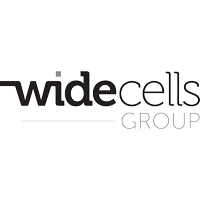What is Hermanksy-Pudlak Syndrome?
Hermansky-Pudlak Syndrome (HPS) is a rare disease characterised by an absence of pigment in the skin, eyes and hair known as oculocutaneous albinism.
These individuals have extreme sensitivity to the sun and artificial light and a higher than average risk of skin cancers from sun exposure.
Most people with the disease are classed as legally blind, with common vision problems such as strabismus (cross-eyes) and nystagmus (involuntary eye movements).
HPS also leads to blood platelet abnormalities. This causes problems with blood-clotting which can be life-threatening, especially following accidents, during surgery and, for females, during menstruation and childbirth.
People with the disease also have a metabolic dysfunction related to the lysosome. Lysosomes are the recycling centres of our cells, disposing of unwanted proteins, carbohydrates and fats. Individuals with HPS cannot properly dispose of a fat-protein compound called cored lipofuscin, which builds up and causes progressive damage, especially to the liver and kidneys.
A further complication of HPS is inflammation of the colon. Similar to Crohn’s disease, it causes ulcers on the wall of the gut and can lead to excessive bleeding.
In the most severe forms of HPS, patients aged 30+ may develop pulmonary fibrosis, a life-limiting lung condition that leads to the scarring and stiffening of lung tissue, making breathing difficult and reducing the amount of oxygen circulating in the blood.
In rare cases, immunodeficiency can occur in HPS patients in early childhood. However, there have only been 12 reported cases.
HPS affects 1 in 1 million individuals worldwide and is found in males and females equally. It is most common in people of Puerto Rican descent.
It is caused by a genetic mutation in genes that play a role in the production of proteins related to the functioning of the lysosome.
The disease is autosomal recessive, which means that a child needs to inherit a copy of the mutated gene from each parent for HPS to manifest. The parents will most often be healthy carriers and show no symptoms.
When two healthy carriers have a child, there is a 25% chance that the child will inherit the mutated genes from each parent, meaning that they will have the disease. There is a 50% chance of them inheriting only one copy of the gene and therefore being an asymptomatic carrier like their parents.
There is a 25% chance that the child will inherit no copy of the gene and therefore have neither the disease, nor a copy of the gene to be passed on to future generations.
Diagnosis is made via a full clinical examination and an ophthalmic evaluation, seeking to identify hypopigmentation of the skin, hair and eyes will be sought. A blood count will be taken to assess blood platelet function.
Molecular testing for the genes associated with disease may confirm a diagnosis.
How is it treated?
There is no cure for HPS.
Treatment focuses on managing the symptoms and complications of the disease.
Platelet transfusion may be needed if excessive bleeding occurs after surgery.
Excessive menstrual bleeding may be treated with the contraceptive pill.
Aspirin should be avoided at all times.
Patients with pulmonary fibrosis will require regular lung function testing. Oxygen therapy may be used and eventually a lung transplant might be needed.
For individuals with pulmonary fibrosis, platelet transfusions should be a last resort in case they require a lung transplant in the future. Multiple transfusions can cause antibodies to build up and with that increase the risk of graft rejection.
Patients with immunodeficiency disease may require a bone marrow transplant and drug therapy to address neutropenia (an abnormally low level of the neutrophil white blood cell).


